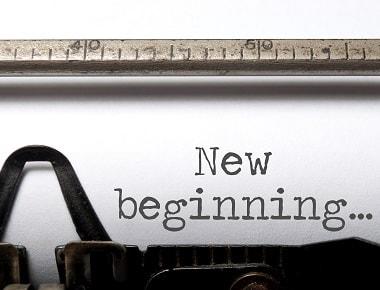Detox Center in Orange County
For most clients entering rehab for the first time, the very first step in the process is to physically detoxify—or “detox”—from the substance(s) in their system. On this page, we’ll explain exactly what medical detox is, how it works, and what our clients can expect from detox at our facility.
What Is Medical Detox?

Medical detox (short for detoxification) is the first phase of treatment for those who are still heavily addicted to drugs or alcohol. The intent of this phase is to break the addiction by allowing the remaining substance to work its way through and out of the body. Before treatment actually begins, the medical team works with the client to develop a safe and appropriate treatment plan.
During detox, clients are under 24/7 medical supervision to ensure their health and safety. Vital signs like heart rate, blood pressure, and temperature are taken regularly to watch for any concerning changes and stop any life-threatening withdrawal symptoms before they start. For some clients, medications may be prescribed to mitigate especially severe symptoms.
Common Types of Drug and Alcohol Detox
Because every individual’s struggle with drug or alcohol abuse is unique, the process of detox can involve a variety of different methods. Most of the time, the method to be used is determined by how long a person has been addicted, how much the person has been using, how strong the addictive nature of the substance is, and how dangerous withholding the substance can be.
If a person has been taking drugs or drinking alcohol in large amounts for some time, the symptoms of withdrawal can be agonizing. In some cases, the physical repercussions of withholding the substance can be life-threatening, causing dangerous fluctuations in body temperature, heart rate, blood pressure, and other key vital signs.
Now, let’s discuss four popular choices for detox: the “cold turkey” method, tapering, home detox kits, and rapid detox.
Cold Turkey
This first method is probably one of the most well-known forms of detox, particularly because of its simplicity and various dramatic portrayals in TV shows and movies. “Cold turkey,” as it’s commonly called, is a method in which substances are withheld completely, and little to no additional assistance is given to the individual during withdrawals. The symptoms of withdrawal can be uncomfortable, but the individual generally continues to “tough it out” while the body works the remaining drugs or alcohol through its system.
Because some withdrawal symptoms can be quite severe or even life-threatening, the cold turkey method is not always the best solution. For those who have been taking drugs or drinking alcohol heavily for a long time, this method can present greater risks. Heavy drinkers and drug users with especially strong addictions should definitely seek a different kind of detox for their safety.
Tapering
Tapering is a much gentler method than cold turkey, as it involves gradually reducing the intake of drugs/alcohol and slowly weaning the body off of the chemicals. This not only slowly ramps down use and minimizes cravings but also mitigates the risk of serious negative reactions or dangerous withdrawal symptoms from withholding too much of a substance too soon.
This form of detox tends to be best for dealing with severe cases in professional treatment facilities, as it requires careful dosage management and close medical supervision. Improper tapering can be just as dangerous as going cold turkey.
Home Detox Kits
Home detox kits are relatively low-cost, DIY kits that claim to be able to rid the body of drug addiction at home. However, most of the over-the-counter drug detox kits you’ll find on the pharmacy shelf are totally ineffective. In fact, using such kits in the absence of medical supervision may even be harmful.
The claims of home detox kits have never been verified by medical science, and the ingredients used are most often simple supplements that have no effect on the filtering processes of the body. Although it is possible that some individuals could have a beneficial response to a certain home detox kit, it is far more likely that the kit itself is ineffective and that improvements are due to normal liver and kidney function.
When it comes down to it, the majority of home detox kits are just the cold turkey method with a fancy new look, a heftier price tag, and the possibility of side effects from taking an unregulated supplement. Such DIY methods are also unlikely to prevent relapse.
Rapid Detox
Unlike the standard detox process, which can take several weeks to complete, the rapid detox process involves administering a variety of medications to bring on withdrawals, sedate the patient, and increase the rate at which substances are eliminated from the body.
Originally developed in the 1980s for use with opiate addictions, this form of detox can be completed in a matter of hours. Due to the use of anesthesia, the patient generally has no memory of the experience or its discomfort. However, the intensity of rapid detox may not be ideal for those whose bodies are vulnerable to physical stress. The National Institute on Drug Abuse (NIDA) continues to study the effectiveness, applications, and long-term effects of rapid detox.
What to Expect During Detoxification
 Upon intake at our CA drug rehab center, each client undergoes a full bio-psycho-social assessment. This part of the drug rehab process allows us to find out the substances and amounts the client used prior to entering detox. It also enables us to identify the core issues that are most likely to interfere with recovery. Mental health issues may also be identified through this assessment.
Upon intake at our CA drug rehab center, each client undergoes a full bio-psycho-social assessment. This part of the drug rehab process allows us to find out the substances and amounts the client used prior to entering detox. It also enables us to identify the core issues that are most likely to interfere with recovery. Mental health issues may also be identified through this assessment.
After the clients are assessed, individualized drug treatment programs can be developed to bring about and maintain the stabilization of each client’s physical detox and to support his or her ongoing recovery.
At our facility, stabilization is achieved through one of two methods. The first method is the “cold turkey” method described in the previous section, during which the client detoxes naturally. The second method guides the client through detox with the assistance of medication. The client will be informed as to what to expect from each of the drug rehab programs so that he or she can make an educated decision on which detox method to choose.
The second method does utilize medication to reduce the physical withdrawal symptoms, making them more bearable; however, the medications are non-narcotic and only prescribed for a period of 10 days to prevent a new addiction from forming. For this reason, we suggest this method only in extreme cases.
The detox period can last anywhere from a few days to a few weeks. Most clients will complete detox around day 10, especially if they proceed without medications. As clients’ physical detox comes to an end, they are encouraged to start working on the mental aspect of recovery. To achieve this, clients prepare to participate in residential treatment and support groups.
Once the detox process is complete, the client can then move on to the second phase of our program: inpatient treatment (primary care). This includes transitioning from the detox facility to a treatment house.
Common Symptoms of Drug and Alcohol Withdrawal
Withdrawal can have a profound effect on the body, especially the central nervous system. The exact symptoms a person will experience during withdrawal depend greatly upon the type of substance being withheld, the amount they were regularly consuming, the duration of use, and the person’s individual health.
The following are just a few examples of common physical and mental symptoms of alcohol withdrawal and/or drug withdrawal:
- Extreme cravings
- Vomiting, nausea
- Muscle pain and/or stiffness
- Alcohol withdrawal syndrome
- Extreme temperatures (chills, fever, sweating)
- Tremors
- Hallucinations
- Anxiety, paranoia
- Irritability
- Depression, suicidal thoughts
- Dizziness, light-headedness
- Extreme heart rate and/or blood pressure (high or low)
- Headache
- Insomnia, restlessness
- Seizures
Begin Your Journey to Health and Sobriety at Yellowstone Recovery
 No matter what kind of substance you have become addicted to, it’s not easy to break free on your own. If you’re ready to take back control of your life, you deserve to have expert help from a professional team that genuinely cares about your well-being. At Yellowstone Recovery in southern California, we believe that everyone deserves the chance to detox and recover in a safe, monitored, supportive environment.
No matter what kind of substance you have become addicted to, it’s not easy to break free on your own. If you’re ready to take back control of your life, you deserve to have expert help from a professional team that genuinely cares about your well-being. At Yellowstone Recovery in southern California, we believe that everyone deserves the chance to detox and recover in a safe, monitored, supportive environment.
Our California alcohol and drug addiction treatment program is predicated on restoring you to your ideal health. Detox is a crucial part of treatment for alcohol and drug addictions because it helps our clients to work first on the physical aspects of addiction and provides them with a firm foundation for effectively dealing with related issues going forward. This is the first phase of the drug rehab program. Our trained staff is always standing by, ensuring clients remain comfortable during the detox process.
Our location allows clients to feel the tranquility of the Pacific coast. Once clients are through detox and have completed the initial “blackout” period (no contact outside the facility), they can experience the true beauty of the west coast and “detox” their spirits with the beauty of nature. In addition to our expert clinical approach to rehabilitation, we strongly believe in the healing benefits of having peaceful, relaxing surroundings.
If you are suffering from alcoholism and/or drug addiction and are ready to change your life, we encourage you to reach out to any of our detox centers in Orange County, California. Affordable and supportive, our California recovery programs have been hailed as “nothing short of a miracle.” If you could use a miracle in your life, call us now at (888) 418-4188.
BACK
Request More Information
Start your recovery today.
- Treatment Options
- Program Curriculum
- Program Services








